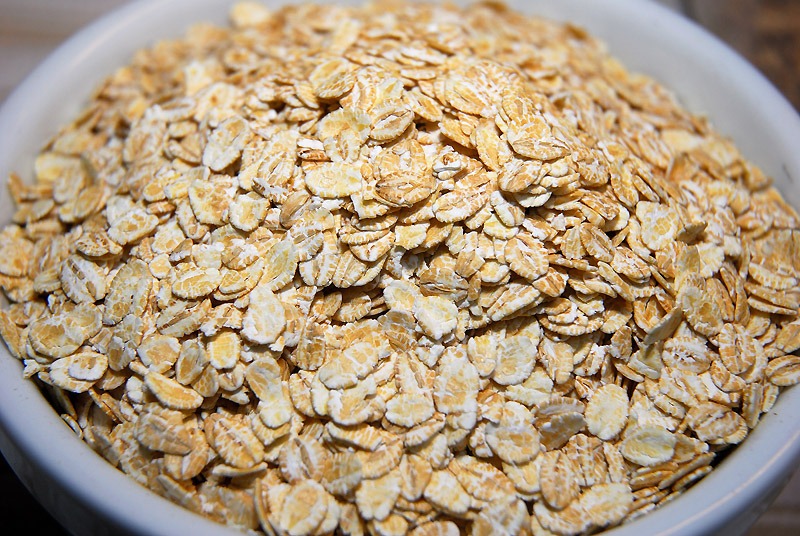
Global barley flake demand is anticipated to be valued at US$ 7.35 Billion in 2022, forecast to grow at a CAGR of 5.87% to be valued at US$ 13 Billion from 2022 to 2032.
Barley flakes are prepared by husking the kernels of barley grain which are steamed. The steamed grains are further flattened, rolled and then dried to obtain barley flakes. The barley flakes are rich in fiber, proteins, etc., and also contains many essential minerals such as copper, manganese, potassium, selenium, etc. The barley flakes can be cooked in a similar manner like the oat flakes. Barley flakes have a low glycemic index when compared with the other grains and thus might be a suitable food option for the consumers having diabetes. The barley flakes can be mixed with the bakery products such as cookies, bread, etc., muesli, and can be also served as a hot cereal. Barley flakes have high nutritional value, nutty flavor and can be used in various food recipes which might increase its demand in the food industry.
Discover Growth Potential: Explore our detailed market research study to identify high-potential sectors and strategic business opportunities.
Barley Flake Demand in Food Processing Industry
The increase in health trends and consumer awareness are some of the important drivers that might increase the market for barley flakes. Due to the busy lifestyle, the consumers are focusing on the use of food products that have high nutritional value and can be easily prepared and thus barley flakes might be a suitable choice as it is rich in nutrients and requires less cooking time. Therefore, as barley flakes are aligned with the consumer requirements, there might be an increase in the barley flake market.
The trend for the use of clean label products might serve as an important driver for the increase in the market of barley flakes. Barley flakes can be incorporated into various food products such as cookies, bread, biscuits, breakfast cereals, etc., and thus can be used as a food ingredient by the manufacturers of the food products to develop innovative and healthy food products and therefore might attract the health-conscious consumers that prefer the use of clean-label food products.
The presence of similar products such as oat flakes and the lack of awareness about barley flakes can serve as a major restraint for the barley flakes market. Oat flakes are very popular among the consumers due to its high nutritional value, a variety of flavors, and can be used in the preparation of beverages, muffins, bars, cookies, etc., and thus can serve as a major restraint for the barley flakes market.
Global Barley Flake: The key market players are King Arthur Flour, Shiloh Farms, Bob’s Red Mill, Honeyville, Inc., Naturally Yours, Vee Green Organic Life Care Private Limited, Helsinki Mylly Oy, Briess Malt & Ingredients Co., Rude Health, etc., are among the others.Global Barley Flake: Key Developments
In 2018, Rude Health had launched a new product named Naked Barley Porridge which is wheat-free, organic and is made up of 100% naked barley flakes.
In 2014, Kellogg had launched a new cereal, Kashi® Organic Sprouted Grains Cereal which is made up of 100% sprouted grains such as barley, amaranth, wheat, oats, spelt and brown rice in the form of whole grain flakes.
Opportunities for Barley Flake Participants:
The improvement in the pre-treatment process might increase the nutritional value of the barley grains which can be further used for the preparation of the barley flakes. The improvement in processes such as steaming, rolling, etc. might help in developing barley flakes at a reasonable price and thus might attract the manufacturers of the food products to develop innovative products using barley flakes and therefore there might be an increase in the market of barley flakes.
Secure Your Copy Now: Gain full access to the Barley Flake Industry report, including Market Forecast, Company Share Analysis, Competitive Intelligence, DROT Analysis, Market Dynamics, Challenges, and Strategic Growth Initiatives.
Brief Approach to Research
The analysis will be done a modeling-based approach and triangulation methodology to estimate data covered in this report. A detailed Barley Flake understanding and assessment of the flavor, application and encapsulation process of the segments covered in the study is followed by carrying out a demand-side approach to estimate the sales of target segments, which is then cross-referenced with a supply-side assessment of value generated over a pre-defined period. The statistics and data are collected at a regional level, consolidated and synthesized at a global level to estimate the overall Barley Flake sizes.
Key Segments Profiled in the Barley Flake Industry Survey
By Nature:
Organic Barley Flake
Conventional Barley Flake
By Product Type:
Hulled Barley Flakes
Dried Barley Flakes
Toasted Barley Flakes
Other Barley Flakes (e.g. pearled, etc.)
By End Use:
Barley Flakes for the Food Industry
Barley Flakes for Beverages
Barley Flakes for Other End Uses (e.g. Animal feed, etc.)
By Distribution Channel:
Barley Flakes Sales via Online Retail
Barley Flakes Sales via Supermarkets
Barley Flakes Sales via Other Distribution Channels (e.g. Specialty Stores, etc.)
About Future Market Insights (FMI)
Future Market Insights, Inc. (ESOMAR certified, recipient of the Stevie Award, and a member of the Greater New York Chamber of Commerce) offers profound insights into the driving factors that are boosting demand in the market. FMI stands as the leading global provider of market intelligence, advisory services, consulting, and events for the Packaging, Food and Beverage, Consumer Technology, Healthcare, Industrial, and Chemicals markets. With a vast team of over 400 analysts worldwide, FMI provides global, regional, and local expertise on diverse domains and industry trends across more than 110 countries.
Contact Us:
Future Market Insights Inc.
Christiana Corporate, 200 Continental Drive,
Suite 401, Newark, Delaware – 19713, USA
T: +1-845-579-5705
For Sales Enquiries: sales@futuremarketinsights.com
Website: https://www.futuremarketinsights.com
LinkedIn| Twitter| Blogs | YouTube